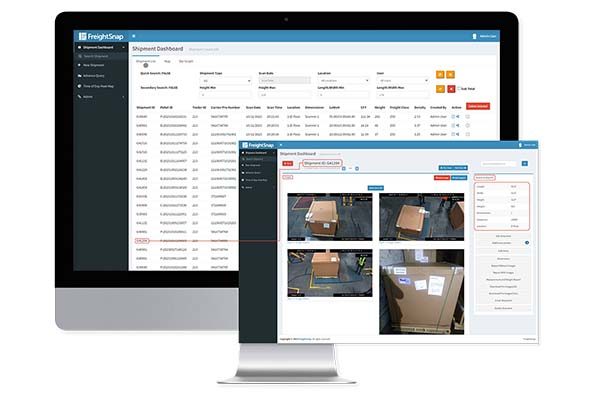Streamlining the shipping process
Freight documentation system eases challenges associated with lost shipments, damaged freight.

A lost or damaged shipment creates problems for everyone in the supply chain: Shippers will seek to recover the loss from business partners, but freight carriers and logistics services providers often lack visibility into the particulars of the shipment’s journey, making it difficult for all parties to assess where the supply chain broke down.
Leaders at dimensioning and weighing systems specialist FreightSnap say they have an answer to the problem. They are helping shippers and logistics service providers share information that can make it easier to track down lost shipments, assess damage, and get to the bottom of a whole host of other freight-related headaches. It all comes down to a cloud-based mobile application that warehouse dock workers can use to detail the condition of freight as it’s loaded into a carrier’s trailer.
“When a piece of freight goes missing, often the carrier wants proof it was picked up. If it was damaged, they want pictures of how it was tendered,” explains FreightSnap CEO Michael Eichenberg, adding that these extra steps incur costs that often come on top of charges levied against the shipper if freight hasn’t been classified or dimensioned properly on the way out the door. “The size and weight reclassifications [are] costing them real dollars that [are] unrecoverable.”
To address all of those issues, FreightSnap developed FreightSnap 360, a mobile app that allows dock workers to scan shipping documents and take images of each piece of freight as it’s handed off to the carrier and placed in a less-than-truckload (LTL) trailer. The information is stored in the cloud, where it can be accessed and then shared with business partners when questions arise.
Freight forwarder Taggart International Ltd. has seen improvements since it began using the app earlier this year.
“The first day we implemented this system, one of our customers in Chile wanted to see images of a shipment we processed at one of our facilities. We dimension everything with our FreightSnap dimensioner and take multiple images of everything we handle. Our team also takes images with the mobile application,” Sean Scarbrough, Taggart’s CEO, said in a statement describing the project. “So, when our customer asked for the images, they were shocked at what we could provide them. From the FreightSnap 360 application, we can quickly send a link the customer can open and then take a quick image of any piece of freight to include with our own. In many cases, we can identify labels and other key information with these shipments. It has been an absolute game-changer for us.”
That’s because the immediate image-sharing allows partners to compare information on the condition of the freight, making it easier to identify whether the correct product was received and where damage might have occurred. The process ensures seamless documentation throughout the shipment process, according to FreightSnap, helping users protect against re-bills or damage claims from a trading partner. Taggart International has reduced those charges and claims considerably since implementing the solution, company leaders say.
FINE-TUNING THE PROCESS
FreightSnap 360 is integrated into FreightSnap’s FS 5000 pallet dimensioner, an automated solution that captures the weight and dimensions of palletized freight so that shippers are charged accurate shipping rates and can dispute reweigh and size-reclassification charges. The dimensioner also captures four images of the freight during the dimensioning process. All of the information is stored in the cloud, to be shared with any partner along the supply chain.
The 360 app takes all of this further by adding proof of pickup to the documentation process. Using handheld devices, such as Android or iOS smartphones, workers at the loading dock scan the shipping documents as the freight is tendered to the carrier and take pictures of the freight in the trailer. That information is added to the dimensioning data in the cloud to provide a 360-degree view of the shipment, which includes the certified measurements and weight, images of the shipment prior to loading from multiple perspectives, and then the images of the freight once it’s loaded in the LTL trailer. Dock workers can bolster the proof by including images of order numbers and other identifying information on the freight. What’s more, customers receiving the freight can document the condition of the shipment as well, adding their images to the mix. The process creates a seamless, automated—and complete—look at each shipment.
Freight carriers like Estes Express Lines Inc. have seen results in line with Taggart International’s improvements.
“Before we partnered with FreightSnap, we really had no visibility on actual damage claims and lost freight. In a system like ours, where we handle thousands of shipments each day across multiple hubs and terminals nationwide, it is impossible to navigate this part of the business without documentation from both our customers and our own systems,” says Webb Estes, president and COO of Estes Express Lines Inc. “Many of our customers utilize FreightSnap 360, and [by using their photos] combined with our own images, we have been able to strike the right balance on how these things are settled, improve our own operation, and, in the end, better serve our customers.”Related Articles
Copyright ©2024. All Rights ReservedDesign, CMS, Hosting & Web Development :: ePublishing